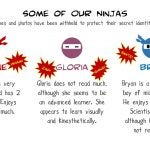Words Apart
Effective reading remains an essential and critical skill for success in society, and many studies continue to explore how reading literacy might be better taught to and acquired by children at a young age. One relatively newer approach focuses on using morphology – how words are formed – to improve early childhood literacy, where increased awareness of how words are formed has been shown to have a small but significant effect on children’s reading abilities. Based on an earlier intervention program by Apel and Diehm (2013), our capstone project, Words Apart, was a trial reading and literacy program involving morphology that sought to improve the reading accuracy and fluency of eleven Primary 3 children from Lakeside Family Service Centre.
Our eight-week program consisted of weekly forty-five minute sessions which involved increasing each child’s morphological awareness through the explicit teaching of morphemes, and activities such as games and puzzles that reinforced this explicit teaching. We made use of a wide range of activities in order to cater to the children’s diverse learning styles. One of our most anticipated games, for example, was a reimagining of the popular game Ninja Warrior, while other activities included Hangman, Guess-the-Word, reading aloud and simple craftwork.
In order to measure each child’s progress, we implemented pre-intervention and post-intervention tests for reading accuracy and fluency, and morphological awareness. Although we found mixed quantitative results as a result of improper test implementation, we observed clear qualitative improvements in each child’s morphological awareness and reading accuracy and fluency, and from our observations, as well as those of the center and our faculty mentors, we feel that ultimately the project was largely a success.
Reflections from Capstone team members
As much as our role in the implementation of this program has, for the most part, seen us as teachers and mentors, we have learnt a lot from the children as well. In interacting with the students, we have learnt to be better communicators, and how to be sensitive to the feelings and needs of our charges. This, of course, did not mean oversimplifying the vocabulary that we used – rather, it challenged us to see the world from our students’ different and oftentimes illuminating perspectives.
We decided to embark on Words Apart because we recognize how vital the process of reading is in our daily lives. Literacy affects the way in which we interact with those around us and the ability to articulate what we mean has great implications on job prospects and self-confidence. Words hold power, meaning and beauty, and it is this beauty of language that we feel every child should be able to experience, and in turn, be able to articulate in their speech and writing in powerful, meaningful and beautiful ways.
References
Apel, K., & Diehm, E. (2013). Morphological Awareness Intervention With Kindergarteners and First and Second Grade Students From Low SES Homes: A Small Efficacy Study. Journal of Learning Disabilities, 47(1), 65-75.


